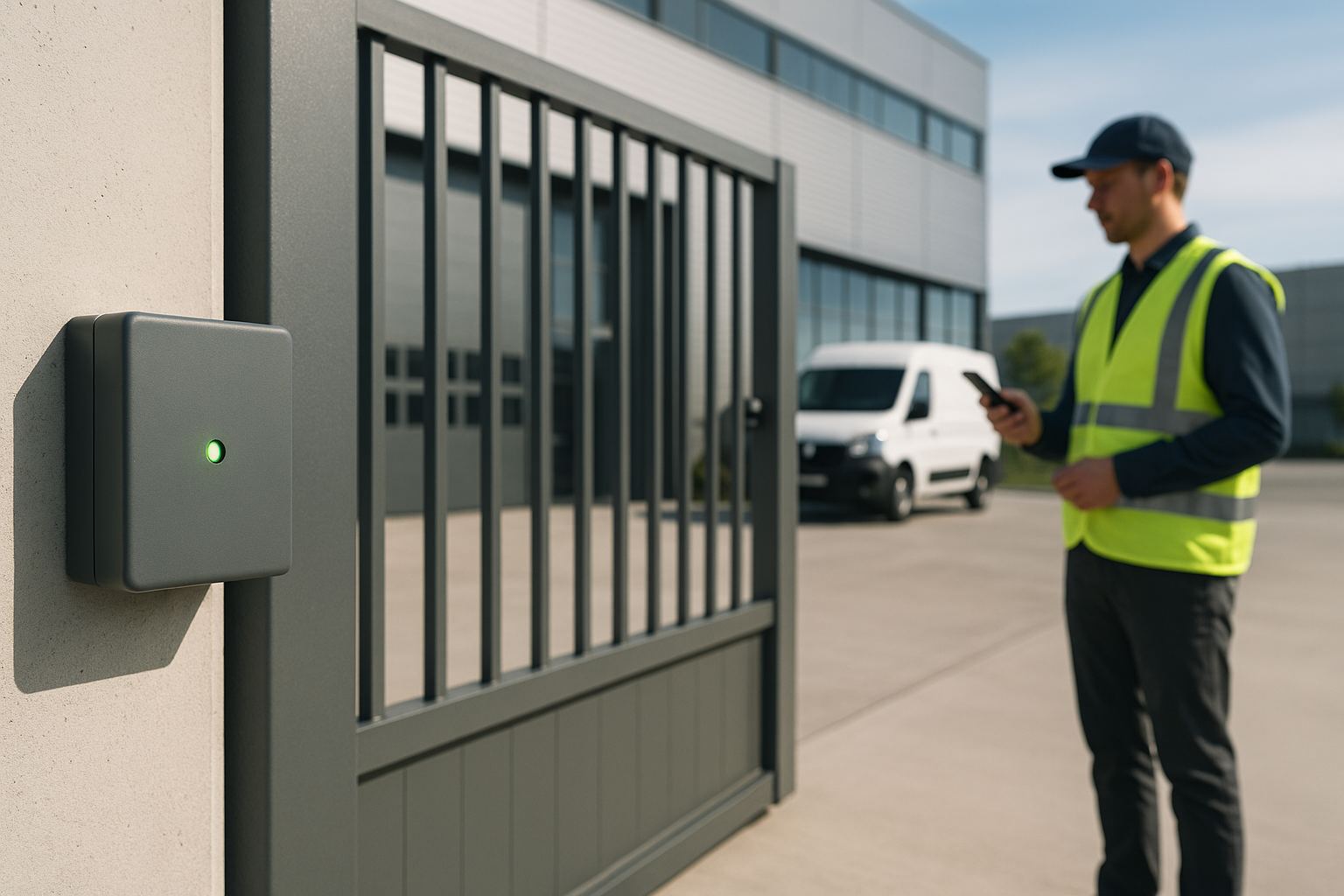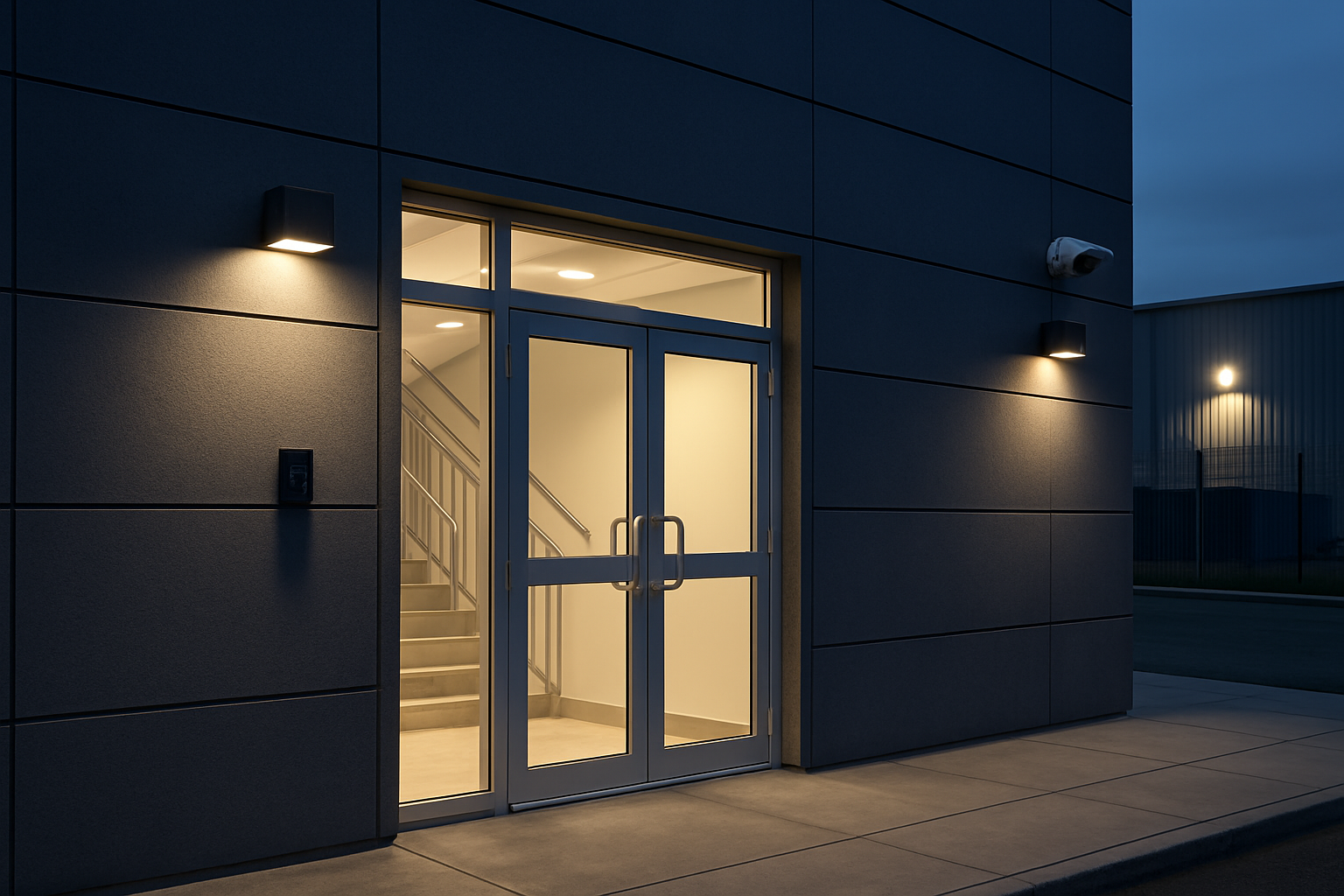WHAT IS AN AUTOMATIC GATE RECEIVER? DEFINITION, TECHNOLOGIES AND BENEFITS FOR PROFESSIONALS

How does a receiver work?
Usefulness for your automatic gate and technical definition
In the field of automation and access control, equipment reliability depends as much on the motorization as on peripheral components, such as receivers. Whether for an industrial site, a logistics warehouse or a professional building, it's imperative to choose a motorized gate receiver adapted to your needs, for secure, smooth and uninterrupted access control.
A receiver is an electronic device that receives a signal from a remote control, smartphone or third-party system (GSM, Bluetooth, 4G) to trigger the opening or closing of the automatic gate. It plays a central role in the communication chain between the user and the motorization system. Without a receiver, no remote triggering is possible. For installers, site managers and technical managers, it's important to understand the function and advantages of a receiver, to guarantee a high-performance, secure and upgradeable installation.
Its main functions are as follows:
- Listening to a given radio frequency (often 433.92 MHz or 868 MHz);
- Recognition of an access code or access protocol ;
- Activate an electrical relay to open or close the gate and manage access.
Depending on the context of use and the level of security required, several types of receiver are available.
1. Radio receivers (433 MHz / 868 MHz)
These receivers are the most widespread, and are operated by remote controls that send a coded signal.
- 433 MHz: historical standard frequency, widely used in residential and collective installations
- 868 MHz: a more recent frequency, offering greater immunity to interference and optimized range.
At Prastel, you'll find MR2E+a 2-channel, encrypted receiver with 1000-code memory and IP55 enclosure for outdoor installation, the MR4E+a 4-channel version, ideal for managing several automated systems from a single point, or the MR1E-XPa compact, single-channel receiver designed for indoor installation.
2. Networked receivers (GSM / 4G)
These new-generation receivers provide connected, centralized management:
- Adding or deleting remote users ;
- Management of time slots and access restrictions ;
- Event history (who opened, at what time, from which media).
The MRS-4G from Prastel perfectly illustrates this evolution with its integrated subscription, 1000-code memory and Wiegand interface for integration with residential, commercial or industrial access control systems.
3. Specialized receivers
Some applications require receivers designed for specific equipment, such as 868 MHz radio bridges, like the TCOG-RX from Prastel, suitable for sectional or wicket doors in residential or industrial applications, or modular receivers for integration into complex multi-site systems.
Concretely,how useful is a good receiver for professionals?
Asecure, reliable receiver doesn't just open gates, it also brings real benefits.
1. Security and access control
- Encrypted protocols and rolling-code prevent unauthorized copying of remote controls
- Backup and management of hundreds or even thousands of users
- Precise settings: access restricted to certain times, quick deactivation of a lost code
2. Flexibility and scalability
- Management of multiple mechanisms by a single receiver
- Possibility of centralizing several entrances points (gates, barriers, garages) without multiplying the number of control units.
3. Simplified maintenance and management
- Remote control of a user base (Bluetooth, GSM, 4G)
- Event log for traceability
- Reduced travel for on-site technical interventions
4. Ease of installation
- Quick connection and intuitive configuration
- Simple pairing of remote controls
- Intuitive configuration with Prastel software or interfaces
For the installer, this means time savings and reduced labor costs.
Best practices for installing a receiver
To guarantee system performance, longevity and reliability, a few essential rules apply:
- Protect the receiver from moisture and shock;
- Position the antenna correctly to maximize range;
- Respect the chosen frequency and avoid electromagnetic interference;
- Enable encryption at startup ;
- Perform annual maintenance and keep a backup of the user database.
The receiver is much more than a simple accessory: it's the heart of communication between the user and the automation system. For professionals, choosing the right receiver for each environment (commercial, industrial, collective residential) ensures safety, reliability and upgradability.
Why choose a Prastel automatic gate receiver?
Based in La Ciotat, Bouches-du-Rhône (13), Prastel has been a market leader inautomation for over 40 years. With its comprehensive range of radio, GSM and 4G receivers for professional gates, Prastel supports installers and managers in their automation projects, offering robust, secure and easy-to-deploy solutions.
Discover our complete range of receivers on our website or contact our team if you would like us to help you with your projects.
Prastel latest news
Discover the latest blog posts on automation and safety.
DISCOVER OUR LATEST CATALOG

.webp)





